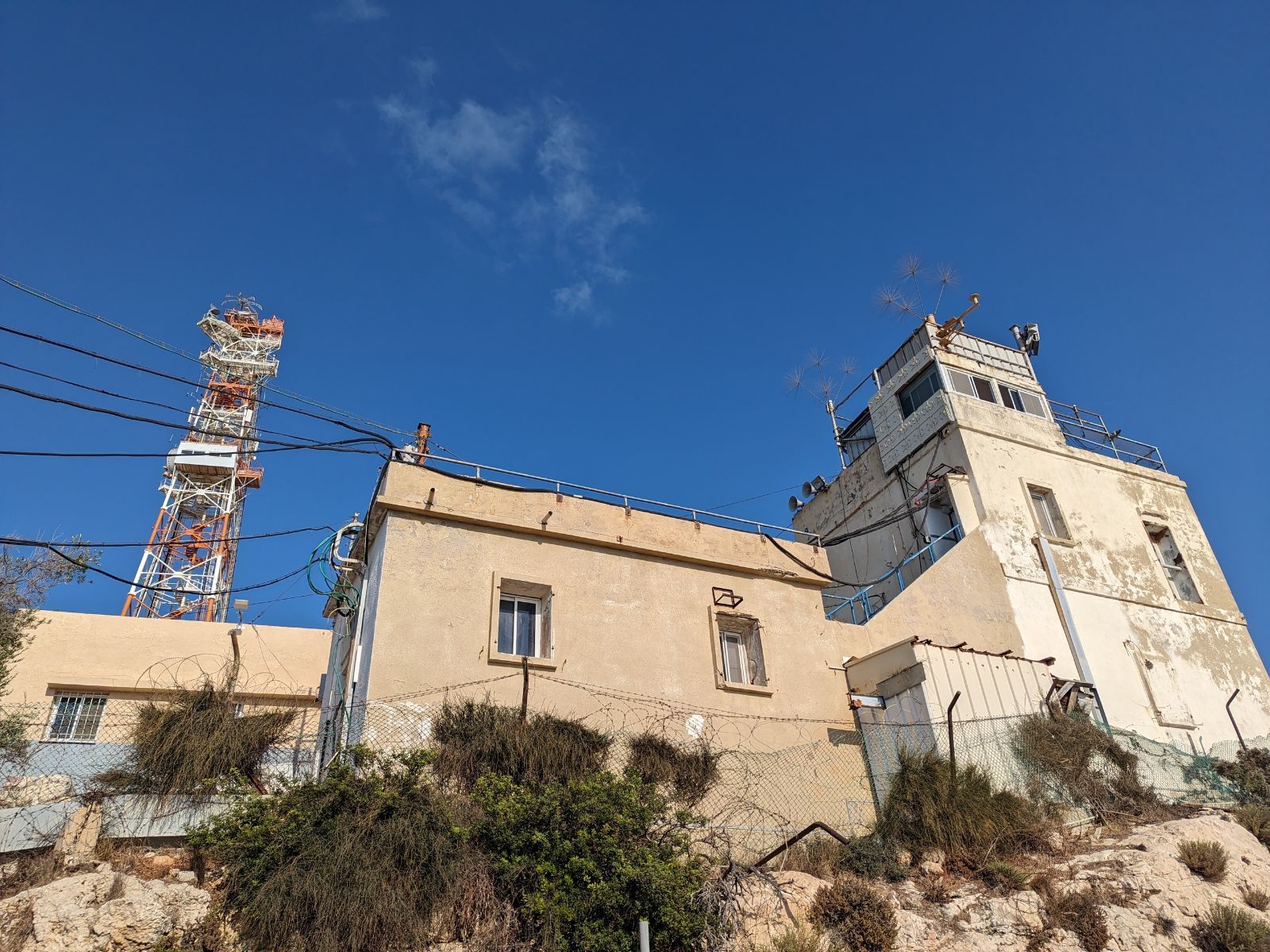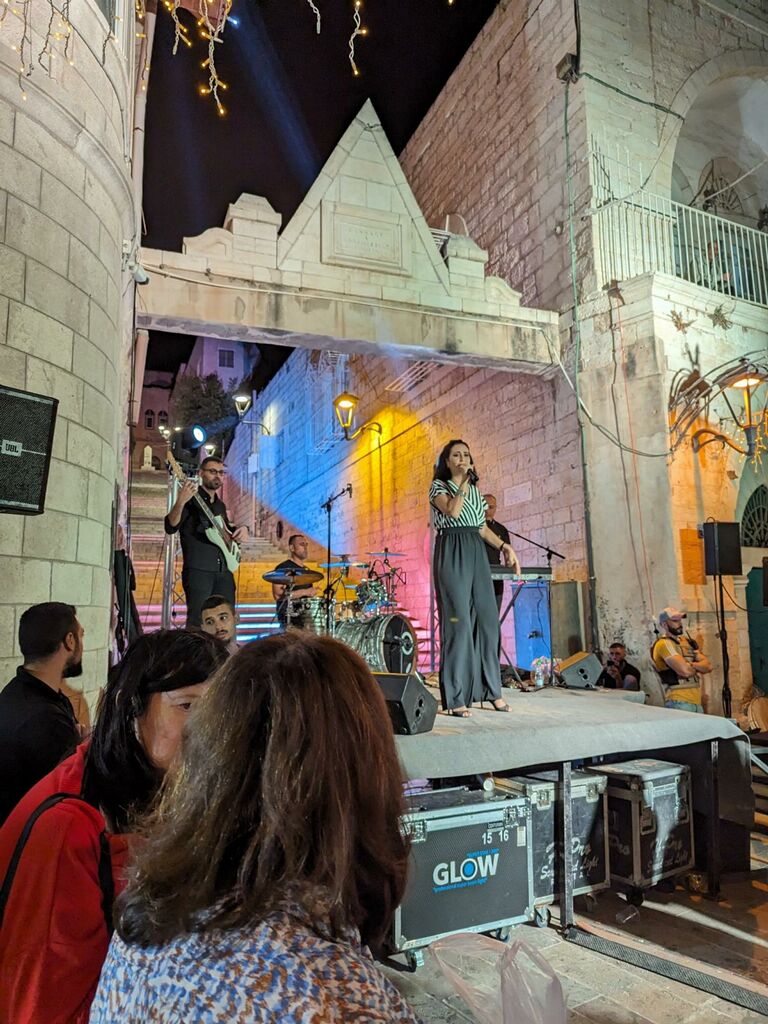On a Return from Israel, Recalling a Fragile Peace Lost to War

Just back from a September trip to Israel, local real estate broker Melissa Csank saw a very different scene than the gruesome terrorist war playing out on social media and the news.
“I heard about tensions, including some in the disputed territories, but did not see it,” said Csank, of Gulf to Bay | Sotheby’s. She returned Sept. 22. Her trip included the usual sites of the Dead Sea, the Sea of Galilee, Bethlehem, Jerusalem, Petra and Capernaeum, as well as an extended stay on a kibbutz. The journey encompassed not only Israel, but Jordan and the Palestinian territories as well.
“I felt very safe in all three of the places,” said Csank.
The choice of a trip to the Holy Land was not her initial pick. Indeed, it was the fifth available option in a short window of time, said Csank.
“My dad has been ill,” said Csank, “and he took a turn for the very much better.”

She had been on previous immersion tours from Overseas Adventure Travel, and she wanted to go on a trip where she could spend time meeting people, not just seeing sites. She just came back Sept. 22.
The war began on Oct. 7, when an estimated 2,200 rockets were fired toward Israel. It escalated as Hamas members, some on motorcycles and some by boat, began killing and even beheading Israeli citizens and soldiers.
The attack came 50 years after the original Yom Kippur war, where Egypt and Syria caught Israel and the U.S. off guard and launched a surprise attack. To date, over 1,200 Israelis and over 1,100 Palestinians are reported dead, with Israeli civilians still held hostage.
Just as the media has portrayed a nation caught off guard, Csank encountered a place that was divided, but not on the surface seemingly unsafe. From the beginning and arrival at Ben Gurion airport in Tel Aviv, to checkpoints through the trip, she did not feel the tension of an imminent war.
“I did feel that everyone in all three areas was very friendly and welcoming,” said Csank.
From her guides, she did hear stories about the West Bank, and incidents on each side. She, and others who visit the region, instead talk of the “security experience” as part of the background.
Being there has made her much more able to understand the complexity of the situation, and how the geography affects the mood. She said that in Israeli areas, you can take your pictures with the Israeli soldiers. But in different zones, including B and C zones, things are more tense.

Since the trip, she and her fellow travelers have been in touch with their guides in two separate WhatsApp text groups, one for their Israeli guide and another with her Palestinian guide.
“They are ok.” Said Csank. “The Palestinian had a misdirected missile land near him. An Israeli guide, who lived in a zone where she has 90 seconds to get to a shelter, had windows rattle.”
Her phone began pinging well before she had seen the news last weekend.
People started asking questions Saturday morning when she got notification that there was trouble, Csank said. She saw pictures of the street near her Tel Aviv hotel strewn with rubble.
“It has been pretty stunning,” said Csank. “I cannot take my eyes away from the TV.”
The danger discussed on the trip was not from Hamas in the south, but was in the north, where her stay on a kibbutz in the Golan Heights took them right to the border of Syria and Lebanon. They have been some of the most dangerous places in the Middle East in the last three decades.
While Csank was not there on a religious pilgrimage, the religious aspects were real. Waiting in line at the Church of the Holy Sepulcher, the location where the crucifixion of Jesus is understood to have taken place, she was taken by seeing visitors so moved.
“One of the people I had been in line with was sobbing outside the tomb,” said Csank.
The trip included a visit to the mountaintop palace and fortress of Masada, where during a Roman-Jewish war in 72 A.D., the Jews held out for three years in a siege in a former palace of Herod, before committing suicide rather than surrender. “Nothing really changes,” said Csank.
During the trip, the group had a gathering with the travelers and staff from Overseas Adventure. “Everybody was there and having fun,” said Csank. “We didn’t get too deep in the discussions.”
Csank said that of the people she encountered, all had friends and relatives of different religions. While the schools and neighborhoods are generally not mixed, the neighborhoods are often comingled. She felt that until there was more interaction on a personal level, a “peace process” would be difficult.
If and when the situation improves, she would encourage others to visit. But because there were so many other places in the world that she has not seen, it would not be her choice for a return trip.
“I think a lot of the people frame this as Israel vs. Palestine,” said Csank. “But Hamas is a terrorist organization. Hamas has destroyed the lives of people who live in Gaza. There is no opportunity,” said Csank.
In the meantime, she is sharing texts with her guides from Israel and the Palestinian areas, and now has a first-hand understanding of the news.
“They were lovely gracious people,” Csank said.








